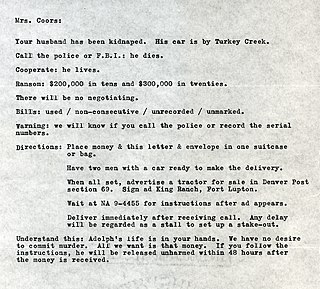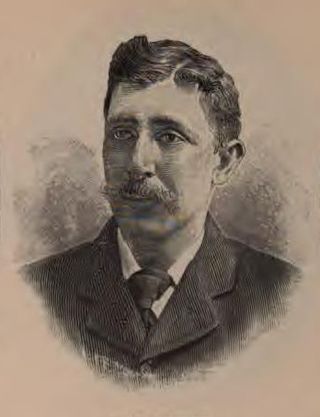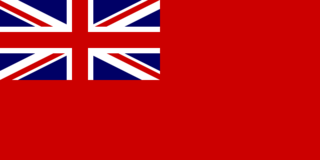Related Research Articles

The United States Merchant Marine are United States civilian mariners and U.S. civilian and federally owned merchant vessels. Both the civilian mariners and the merchant vessels are managed by a combination of the government and private sectors, and engage in commerce or transportation of goods and services in and out of the navigable waters of the United States. The Merchant Marine primarily transports domestic and international cargo and passengers during peacetime, and operate and maintain deep-sea merchant ships, tugboats, towboats, ferries, dredges, excursion vessels, charter boats and other waterborne craft on the oceans, the Great Lakes, rivers, canals, harbors, and other waterways. In times of war, the Merchant Marine can be an auxiliary to the United States Navy, and can be called upon to deliver military personnel and materiel for the military.

Shanghaiing or crimping is the practice of kidnapping people to serve as sailors by coercive techniques such as trickery, intimidation, or violence. Those engaged in this form of kidnapping were known as crimps. The related term press gang refers specifically to impressment practices in Great Britain's Royal Navy.

Joseph Havelock Wilson, commonly known as Havelock Wilson or J. Havelock Wilson, was a British trade union leader, Liberal Party politician, and campaigner for the rights of merchant seamen.
Eliot Valens Elliott, also known as Vic Elliott, was a trade union leader of the Seamen's Union of Australia (SUA) from 1941 to 1978.
The Seamen's Union of Australia (SUA) was the principal trade union for merchant seamen in Australia from 1876 to 1991. The SUA developed a reputation as one of the most militant trade unions in Australia and was closely associated with the communist movement in Australia. The SUA merged in 1993 with the Waterside Workers' Federation to become the Maritime Union of Australia (MUA).

The Seafarers International Union or SIU is an organization of 12 autonomous labor unions of mariners, fishermen and boatmen working aboard vessels flagged in the United States or Canada. Michael Sacco has been its president since 1988. The organization has an estimated 35,498 members and is the largest maritime labor organization in the United States. Organizers founded the union on October 14, 1938. The Seafarers International Union arose from a charter issued to the Sailors Union of the Pacific by the American Federation of Labor as a foil against loss of jobs to the Congress of Industrial Organizations (CIO) and its Communist Party-aligned faction.

Joseph Curran was a merchant seaman and an American labor leader. He was founding president of the National Maritime Union from 1937 to 1973, and a vice president of the Congress of Industrial Organizations (CIO).

Harrald Olaf Lundeberg was a merchant seaman and an American labor leader.

Andrew Furuseth of Åsbygda, Hedmark, Norway was a merchant seaman and an American labor leader. Furuseth was active in the formation of two influential maritime unions: the Sailors' Union of the Pacific and the International Seamen's Union, and served as the executive of both for decades.
Able seaman is a military rank used in naval forces.

An able seaman (AB) is a seaman and member of the deck department of a merchant ship with more than two years' experience at sea and considered "well acquainted with his duty". An AB may work as a watchstander, a day worker, or a combination of these roles. Once a sufficient amount of sea time is acquired, then the AB can apply to take a series of courses/examinations to become certified as an officer.
The International Seamen's Union (ISU) was an American maritime trade union which operated from 1892 until 1937. In its last few years, the union effectively split into the National Maritime Union and Seafarer's International Union.
The maritime history of the United States is a broad theme within the history of the United States. As an academic subject, it crosses the boundaries of standard disciplines, focusing on understanding the United States' relationship with the oceans, seas, and major waterways of the globe. The focus is on merchant shipping, and the financing and manning of the ships. A merchant marine owned at home is not essential to an extensive foreign commerce. In fact, it may be cheaper to hire other nations to handle the carrying trade than to participate in it directly. On the other hand, there are certain advantages, particularly during time of war, which may warrant an aggressive government encouragement to the maintenance of a merchant marine.

SS Minnedosa was one of a pair of transatlantic steam ocean liners that were built in the United Kingdom, launched in 1917 and operated by Canadian Pacific until 1935. Her sister ship was Melita.
The United States merchant marine forces matured during the maritime history of the United States (1900–1999).

Filipino seamen, also referred to as Filipino seafarers or Filipino sailors, are seamen, sailors, or seafarers from the Philippines. Although, in general, the term "Filipino seamen" may include personnel from the Philippine Navy or the Philippine Marine Corps, it specifically refers to overseas Filipinos who are "sea-based migrant Filipino workers".

A sailor, seaman, mariner, or seafarer is a person who works aboard a watercraft as part of its crew, and may work in any one of a number of different fields that are related to the operation and maintenance of a ship.

Merchant seamen crewed the ships of the British Merchant Navy which kept the United Kingdom supplied with raw materials, arms, ammunition, fuel, food and all of the necessities of a nation at war throughout World War II — literally enabling the country to defend itself. In doing this, they sustained a considerably greater casualty rate than almost every other branch of the armed services and suffered great hardship. Seamen were aged from fourteen through to their late seventies.
The Irish Seamen and Port Workers' Union, an Irish trade union, was founded in 1933.
John Allan "Pat" Sullivan was an Irish-born Canadian trade unionist.
References
- ↑ Stanton, John (1978). Life & death of a union : the Canadian Seamen's Union, 1936-1949. Toronto: Steel Rail Educational Pub. ISBN 0887910130.
- ↑ "Canadian Seaman's Union". www.thecanadianencyclopedia.ca. The Canadian Encyclopedia . Retrieved 18 March 2022.
- ↑ "Outline of the history of the Canadian Seamen's Union, by Charles Macdonald - MemoryNS". memoryns.ca.
- ↑ Mickleburgh, Rod (20 February 2016). "'Against the Tide': Two Radical Legacies Remembered". The Tyee.
- ↑ Bown, Peter (2005). The History of the Canadian Seaman's Union and the State of Labour in Canada's Shipping Industry: 1900-1949. University of New Brunswick, Saint John.